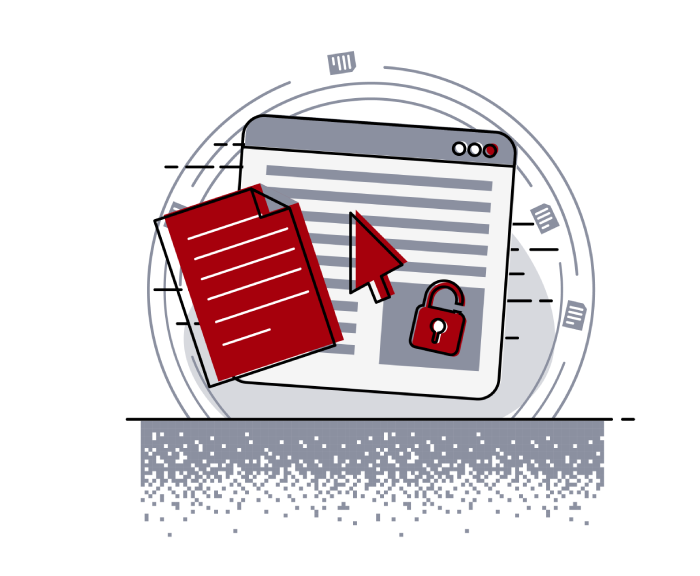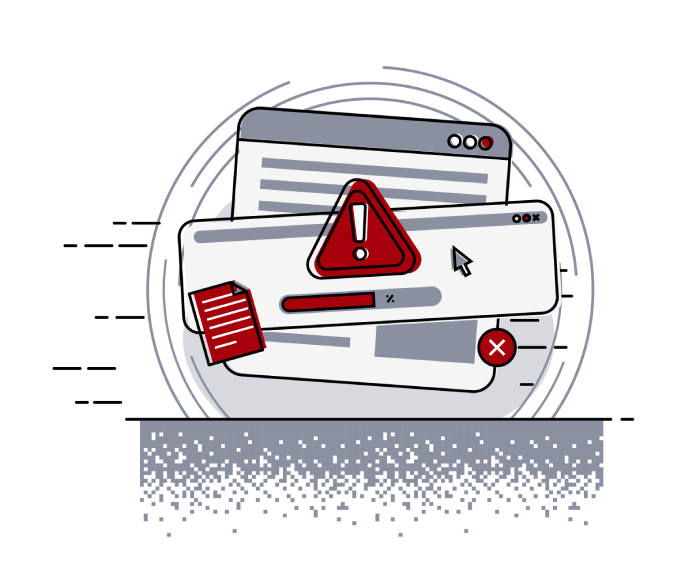
Pentest Chronicles
How Private Cache Can Lead to Mass Account Takeover – pentest case

MATEUSZ KOWALCZYK
July 12, 2023
In many situations, minor vulnerabilities might seem like small fish in the vast ocean of cybersecurity threats. They’re often marked as low severity and thus, overlooked by developers who assume that the conditions for their exploitation are too complicated to be met. However, in this article, we’re going to challenge that assumption and show you how chaining several ‘minor’ vulnerabilities can lead to a Mass Account Takeover.
Let’s begin by explaining some tech jargon:
Vulnerability Chain: Think of this as a domino effect. Multiple connected vulnerabilities can culminate into a serious one. A prime example is a reflected cross-site scripting (XSS) attack. On its own, it’s often considered as medium severity. However, when combined with cookies without the appropriate security flags, it can escalate to an account takeover.
Cache Mechanism: Developers use this to store data “closer” to the user, thus preventing them from loading it directly from the database. This mechanism saves significant resources, especially when thousands of users are simultaneously active. The cache can be set either individually or shared among users.
Application Features: These are functionalities added to the application to enhance the user experience. For instance, when you type a word into a search engine, it offers suggestions for the next word, such as “the most interesting…”, “the most fascinating…”, and so on.
So, what went wrong in the tested application?Why was a Mass Account Takeover a real scenario?
During the application audit, one of our test methodologies involved identifying application parameters and monitoring their behavior within the application environment. Imagine a parameter called SEARCH. Naturally, we’d check if this parameter was vulnerable to SQL injection, XSS, server-side request forgery (SSRF), server-side template injection (SSTI), and so on. We started with a basic check for the reflected value.
The auditor sends the server a TEST value for the SEARCH parameter.
REQUEST:
GET /?SEARCH=TEST HTTP/2
Host: […REDACTED-HOST…]
User-Agent: […REDACTED…]
…
HTTP/2 200 OK
…
[APPLICATION SOURCE CODE]
TEST
[APPLICATION SOURCE CODE]
…
<script>alert(document.domain)</script>Let’s see how the application behaves.
REQUEST:
GET /?SEARCH=><script>alert(document.domain)</script> HTTP/2
Host: […REDACTED-HOST…]
User-Agent: […REDACTED…]
…
RESPONSE:
HTTP/2 200 OK
…
[SOURCE CODE OF APPLICATION]
><script>alert(document.domain)</script>
[SOURCE CODE OF APPLICATION]
…
Repeating the request for the same payload.
REQUEST:
GET /?SEARCH=><script>alert(document.domain)</script> HTTP/2
Host: […REDACTED-HOST…]
User-Agent: […REDACTED…]
…
HTTP/2 200 OK
…
[APPLICATION SOURCE CODE]
><script>alert(document.domain)</script>
[APPLICATION SOURCE CODE]
…
Example 1 – Stealing sensitive user cookies:
To steal sensitive user data like session cookies, two conditions must be met. First, the XSS (Cross Site Scripting) vulnerability must exist in the application, and second, the cookies flags must not be set with HttpOnly. In the tested application, neither of these conditions were met because the application parameters were sanitized, and the cookies had appropriate flags set. But two things went wrong. The cache mechanism allowed the bypassing of sanitization if at least two of the same requests were sent to the application, and unfortunately, the response body contained an object with session cookies.
Example 2 – Stealing sensitive cookies of many users:
In example 1, it is necessary to target potential victims and convince them to click on a link twice or visit a malicious website. Nowadays, awareness of this type of attack is very common, so it can be challenging to trick someone into this scenario. The application also has a feature that suggests phrases in the search engine. By poisoning the search engine with malicious suggestions, mass XSS execution may be possible, leading to a Mass Account Takeover.
Two separate issues, the cache mechanism allowing the bypassing of sanitization and the response body containing an object with session cookies, culminated into a serious problem. The application also had a feature that suggested phrases in the search engine. By poisoning the search engine with malicious suggestions, mass XSS execution could be possible, leading to a Mass Account Takeover.
To sum up, it is crucial not to underestimate minor vulnerabilities. When combined, they can escalate into serious security threats. This article highlights the importance of considering all possible vulnerabilities, no matter how insignificant they may seem on their own. Prevention, thorough testing, and proactive mitigation strategies are essential to safeguarding your applications and their users.
#cache #Hack #Vulnerability #XSS
Next Pentest Chronicles

When Usernames Become Passwords: A Real-World Case Study of Weak Password Practices
Michał WNękowicz
9 June 2023
In today's world, ensuring the security of our accounts is more crucial than ever. Just as keys protect the doors to our homes, passwords serve as the first line of defense for our data and assets. It's easy to assume that technical individuals, such as developers and IT professionals, always use strong, unique passwords to keep ...

SOCMINT – or rather OSINT of social media
Tomasz Turba
October 15 2022
SOCMINT is the process of gathering and analyzing the information collected from various social networks, channels and communication groups in order to track down an object, gather as much partial data as possible, and potentially to understand its operation. All this in order to analyze the collected information and to achieve that goal by making …

PyScript – or rather Python in your browser + what can be done with it?
michał bentkowski
10 september 2022
PyScript – or rather Python in your browser + what can be done with it? A few days ago, the Anaconda project announced the PyScript framework, which allows Python code to be executed directly in the browser. Additionally, it also covers its integration with HTML and JS code. An execution of the Python code in …


